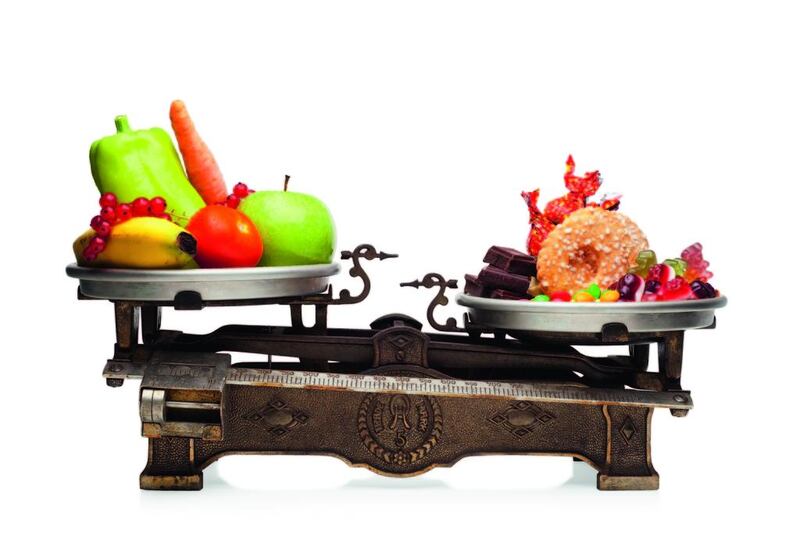For many decades, our society has emphasised that we should watch calories and fat. After all, fat has nine calories per gram while carbohydrates and protein have only four.
The World Health Organization – and many other health organisations around the world – believes the fundamental problems linked to obesity are “an energy imbalance between calories consumed on one hand and calories expended on the other hand”. Put simply, we get fat if we eat more than we burn and we lose weight if we burn more than we consume. Food is energy and we measure that energy in the form of calories. As a result, this way of thinking has become part of who we are and people spend their lives controlling their calorie intake, trying to eat less while exercising more.
____________________________________________________________
#healthyliving magazine: Your guide to the Water Issue
___________________________________________________________
The 1980s to 1990s were all about low-fat, low-calorie diets. The trend of eating fewer calories and fewer fats is called The American Paradox. Yet the rates of obesity have continued to rise. What about the French, Spanish, Greek or Sardinian paradoxes? They eat far more calories and fat than Americans, yet the incidence of obesity and chronic diseases in these countries is not as severe.
Of course “calorie” is an important measure and should not be discarded altogether. Calories are the energy that fuels our bodies, much like petrol fuels our cars. Without it, our organs would not function. Our body needs a certain number of calories to function, depending on our weight, age, gender and physical activity level.
Not all calories, however, are the same. There are “nutrient-dense” calories (calories high in nutrients that provide a good proportion of vitamins, minerals and antioxidants) and “calorie-dense” foods or “empty calories” (solid fats and/or added sugars). The quality of the calories we consume, rather than the amount, is what influences our weight and how we feel in the long run.
Good-quality, calorie-dense foods lead to satiety and an efficient metabolism, which in turn helps us to maintain a healthy body composition. Simply put, calorie density is the number of calories in a given volume of food. Certain foods have more calories packed into them than others. Fresh tomatoes have about 90 calories per 500 grams while bread has about 1,800 calories per 500g. Knowing the caloric density of foods is the most accurate way to determine whether a particular food will affect your health.
So what is the way forward? First and foremost, an integrative approach should be the starting point. We should abandon the single cause/effect model of “calories in versus calories out” and instead consider all of the potential biological mechanisms to be relevant.
First, long-term chronic stress raises levels of the stress hormone cortisol, which increases fat storage, particularly in the abdominal area and stimulates a rise in appetite for empty calories such as sugar and “junk” fats to provide instant fuel for dealing with an immediate threat. Second, hormones (leptin, insulin, oestrogen dominance and consumption of external hormones in food, called xenoestrogens) can all create havoc with our blood sugar balance, leading to consumption of an instant sugar hit from empty calories.
Finally, we should limit empty calories and switch to a consumption of 80 per cent low-calorie-dense foods, which are higher in water and fibre. Examples are vegetables, fruits, cooked whole grains, oatmeal, cooked beans and legumes, a small amount of good fats and some lean animal proteins.
Consuming empty calories is actually a form of malnutrition, which can contribute to weight gain as the body holds on to fat in the absence of nutritionally dense food. Indeed deficiencies in nutrients are not due to the fact that we don’t get enough to eat. The real culprit is the poor nutritional quality of what we eat. In short, many of us are overfed but undernourished because too many empty calories are consumed. Research has shown that many people are severely deficient in some key nutrients such as calcium, fibre, magnesium, potassium, vitamins A, C, D and E. This is an extremely significant and crucial point because scientific evidence suggests getting enough and the right balance of necessary nutrients offers important protection against weight gain, premature ageing and chronic diseases.
To eliminate empty calories from the diet, knowledge is key. Empty calories are foods that have high calorie-density. Each bite will cost you. They are sugary foods such as soft drinks, energy drinks, sweets, cakes, biscuits, pies, ice cream and solid fats such as biscuits, cakes, pizza, cheese, sausages, fatty meats, butter and margarine. In short, avoid processed and refined foods that are laden with sugar, refined carbohydrates, fats and sodium.
The writer is a nutrition consultant, and raw and paleo chef.






